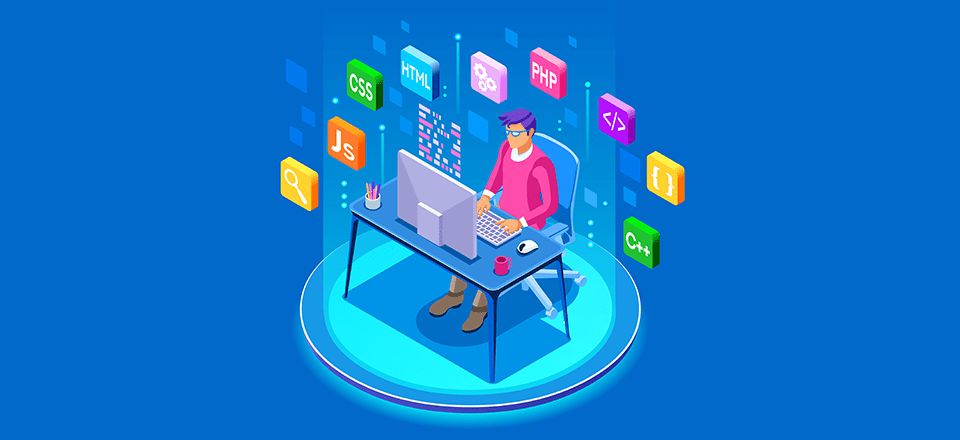A website is a software package. By definition, a box is a ready-made program available to users to perform some tasks. These users include non-IT professionals. Thus, a website qualifies as a package like Microsoft Office or Peachtree Accounting.

Before the Web (WWW) revolution, the development of software packages was the exclusive preserve of skillful programmers. Programmers or software developers develop the logic of programs that a box will eventually use to function. This logic-building aspect of software development requires a high level of intellect. This and the intricacies of mastering programming languages made the development of packages uninteresting and unattractive to a large spectrum of people.
Following the Web’s revolution, it became possible for non-programmers to develop packages right from the inception. These are web-based packages and, of course, websites requiring no programming skills. The result was the creation of a new profession called Web Design. A web designer organizes a web page by arranging texts, pictures, animations, forms, etc., on a page and formats them to produce a good presentation. All he needs to do is use appropriate web development tools like Macromedia Visual Studio and Microsoft FrontPage. For example, you can design a whole web page without using HTML codes through the Design section of Macromedia Dreamweaver. What you have is a website. A website is one or more web pages. These web development tools are equivalent to the popular package Adobe PageMaker, which organizes and formats pages of books, magazines, newspapers, etc. No programming is required.
READ MORE :
- 5 Aspects Of A Successful Business Website Design
- How to Choose a Cheap Web Designer
- How to Set Up a Purchased WordPress Website on Your Hosting Server
- Web Design and Development Information
- How to Get Great Security for your WordPress Website
The limitation of web designing is creating static websites, which may be suitable for some applications but not all. They produce non-interactive and non-dynamic websites unsuitable for certain applications and needs. For example, online registration. The role of a web designer stops at this point, and that of a web programmer begins. As a result of the limitation of static websites, the need to move further arose. People wanted sites where they could post forms for tasks like creating accounts online and authentication of passwords. This led to the developing of web programming languages, otherwise known as scripts. Examples are JavaScript, ASP, ASP.NET, JSP, PHP, ColdFusion, etc. The result was the creation of the profession of web programming. A web programmer develops programs to perform automated tasks on a website. Some prefer to call them software developers. An example of such studies are:
- Data validation.
- Form submission.
- Sign Up.
- Database search.
Thus, developing dynamic and interactive websites capable of doing what conventional software could do on stand-alone computers and networks using non-internet technologies became possible. Online banking and stock broking are examples. These functions can now be carried out entirely on the Internet. To develop functional scripts for such automated tasks, logic building and mastery of the programming language to use syntax are required. Most of the programs are written from scratch.
Can you be a web designer and a web programmer? Yes, you can. Some people double as web designers and programmers, but specialists are noted for doing better in their respective fields of specialization than non-specialists. Some sites do not require more than web designing. Many sites nowadays require web designing and programming, like the multi-tier applications with a presentation layer, the logic layer that interfaces the presentation layer with the database, and the data layer containing the database. Some specialists even design database and write what is called stored procedures and triggers right inside the database. Using stored procedures increases site execution’s overall efficiency as it minimizes the number of times SQL statements are parsed, compiled, and optimized during execution. You can see that site development is quite deep.
The roles of web designers and web programmers are complementary in the development of websites. You need to identify where your ability lies and allow that to inform your choice of area of specialization. If you know you can write programs, you can go beyond web designing and become a web programmer, but if it is otherwise, stick to web designing and continue to grow and sharpen your skills. The truth of the matter is that programming is not for everybody.
If you are a conventional graphic artist, you will find it easy to crossover to web designing. If you are a traditional programmer, you can readily crossover to web programming. I mean traditional graphic artists with expertise in using tools like CorelDraw, Photoshop, and PageMaker to perform Desktop Publishing tasks. I mean the experts in programming languages like C++, FoxPro, COBOL, and Dbase by conventional programmers.
As long as you can determine where your ability lies, you will surely overcome frustrations in your developing websites’ tasks and continue to enjoy what you are doing. If you are a web designer with a job involving programming you cannot handle, look for assistance from a web programmer. If you are a web programmer and have issues with web designing in your task, seek a web designer’s aid if you can handle both areas to a vast extent, well and well.

